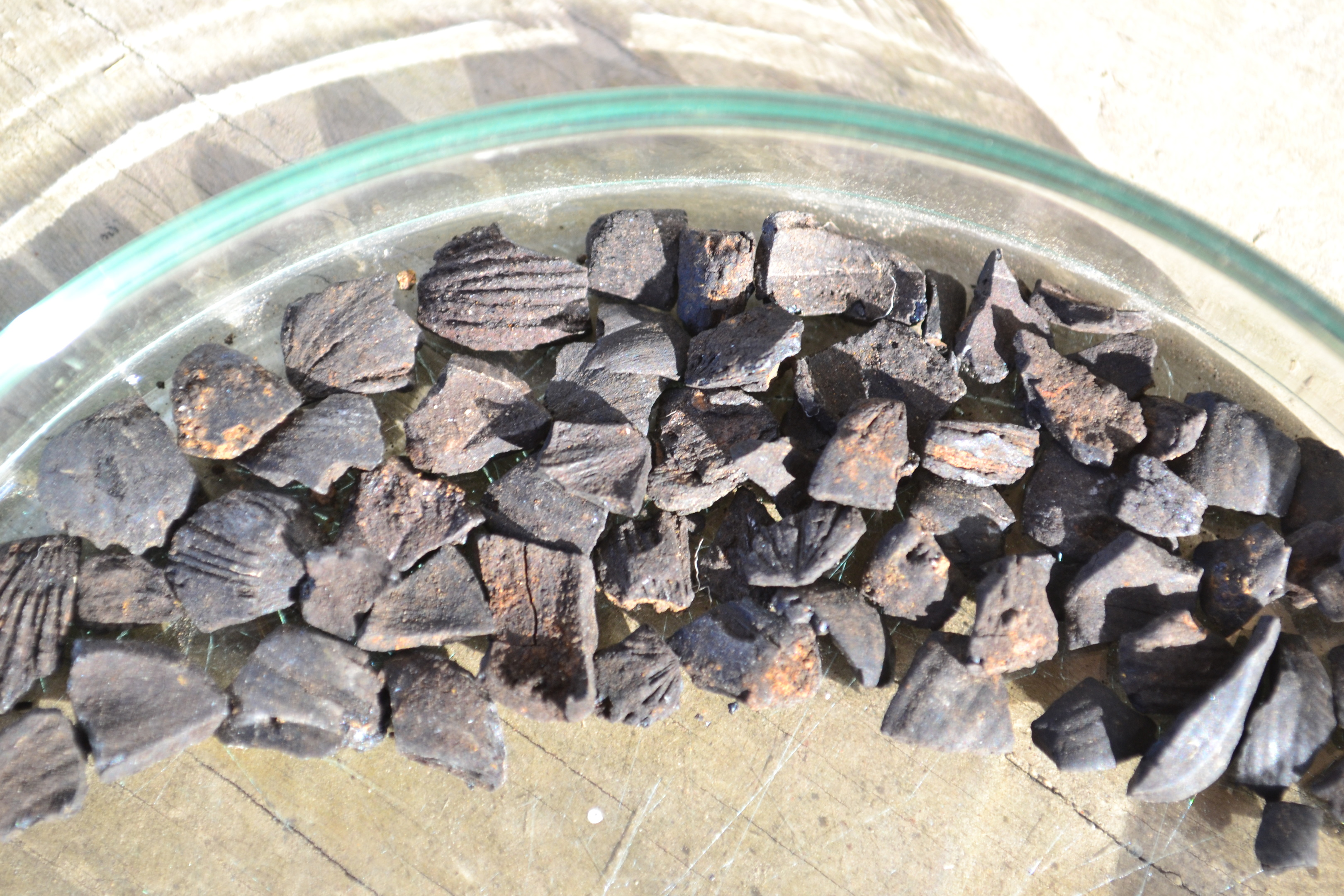An archaeological dig in a north Skye community has uncovered a number of charred hazelnut shells.
The find could offer a fuller picture of Staffin’s hunter-gatherer past about 8,000 years ago.
The discoveries were made as University of the Highlands and Islands (UHI) archaeologists investigated a Mesolithic site above the shore in Staffin Bay, near An Corran.
Mesolithic flints have been eroding from the edge of the Garafad Common Grazing for several years, and a sub-circular structure, which could be a house, also sits on top of the site, adding to the collection of prehistoric sites in the area.
Staffin Community Trust teamed up with the UHI Archaeology Institute for a five-day excavation in September which involved more than 200 people.
The dig has already yielded a fragment of worked bone, and several hundred flints, which could provide further clues about what life was like 8,000 years ago.
Further investigations of the finds have now revealed a plethora of charred hazelnuts left behind by hunter-gatherers who lived off the land.
Dan Lee, of UHI’s Archaeology Institute, said: “We have found lots of fragments of charred hazelnut shells in the lower soil samples. They are the ideal thing to date as they have a short life span and were a Mesolithic favourite.
“There is so much material in the samples we took that we will not be able to process them all with the current budget, but all is pointing to lots of potential to go back for another phase and include them in that. We have what we need for now, to allow us to date the Mesolithic activity at the site.”
Staffin Community Trust director Dugald Ross said: “Despite Staffin having a wealth of prehistoric remains, this is the area’s first archaeological excavation in 20 years and its Mesolithic potential is intriguing and exciting.”
